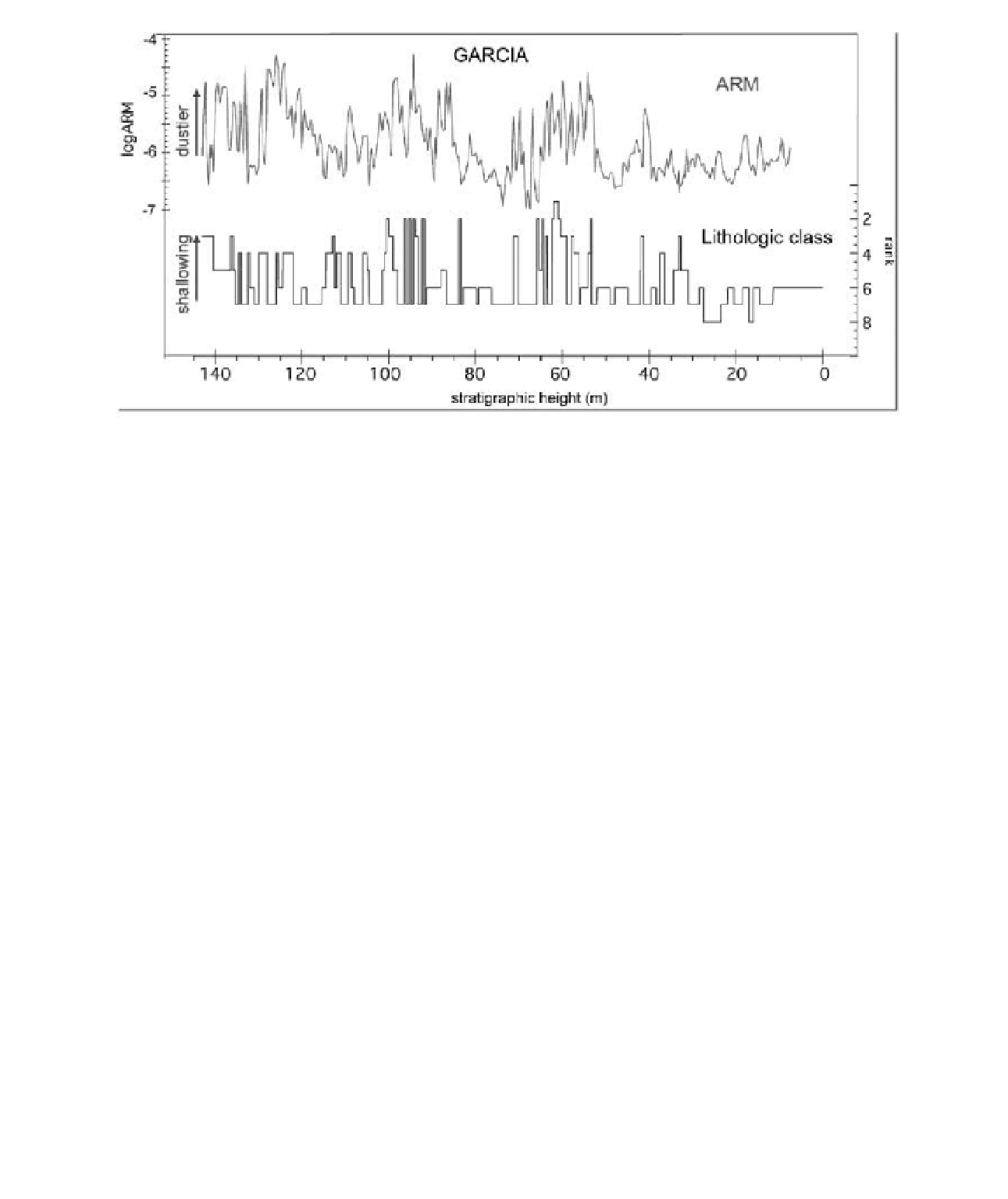Geology Reference
In-Depth Information
Fig. 8.16
ARM cyclostratigraphy from the Potrero Garcia locality of the Cupido Formation shows more structure and
higher-frequency cycles than the depth rank series determined from the facies (Hinnov
et al.
2009). The depth rank series is
constructed by assigning a 'depth rank' for the different facies, i.e. quantifying the facies interpretation of water depth of
deposition. For this study, lower depth ranks indicate shallower water depths. LA Hinnov, D Anastasio, D Latta, K Kodama and
M Elrick, Milankovitch-controlled paleoclimate signal recorded by rock magnetics, Lower Cretaceous Platform carbonates of
northern Mexico, American Association of Petroleum Geologists, Search and Discovery Article #40388, 2009, AAPG.
(See Colour Plate 22)
formed by reduction diagenesis. The ARM cyclostratig-
raphy of the Arguis indicates that the secondary Fe
sulfi des do not swamp the depositional signal of the
magnetite. When the ARM cyclostratigraphy is tied
without tuning to time using the magnetostratigraphy,
periodicities at Milankovitch frequencies emerge from
the MTM spectral analysis of the ARM time series (Fig.
8.18). Strong peaks that rise above the 99% confi dence
limits of the robust red noise (Mann & Lees 1996)
occur at low frequencies of
c.
355 kyr, 232 kyr and
133 kyr. The 355 kyr and 133 kyr peaks are close to
long (405 kyr) and short (125 kyr) eccentricity, respec-
tively. A cluster of peaks near 5 m (24, 23, 21 kyr) sug-
gests the encoding of precession by the ARM as well.
Several other peaks also occur in the power spectrum,
most notably at 89 kyr, 63.5 kyr and 25.6 kyr that rise
above the 95% confi dence interval of the red noise. The
question is: what do those spectral peaks represent?
Tuning to offset the effects of variations in sediment
accumulation rate and minor hiatuses throughout the
section can be one way of addressing this question. In
tuning, an obvious periodicity in the time series is
aligned with a reference time series to make sure
the maximum (or minimum) of the cycles are spaced
evenly. If the section is young enough (less than 40-
50 Ma) the time series can be tied to a theoretical
time series for a given Milankovitch period (Laskar
et al.
2004 ). Kodama
et al
. (2010) tuned the ARM time
series of the Arguis Formation three times (once to
405 kyr long eccentricity cycles and in two iterations
to 100 kyr short eccentricity). The fi rst tuning to
long eccentricity (Fig. 8.19) resulted in a very strong
peak at 400 kyr, as would be expected. The check
used on the viability of the tuning procedure is to
see whether other Milankovitch frequencies are sharp-
ened or emerge with the tuning. The long eccentricity
tuning gives > 99% confi dence peaks at 250 kyr,
129 kyr, 23.8 kyr, 21.7 kyr, 19.7 kyr and 17 kyr. The
129 kyr peak is most likely short eccentricity and the
c.
20 kyr peaks are most likely precession; the tuning is
therefore validated in a sense, but these peaks were
already evident in the untuned power spectrum.




Search WWH ::

Custom Search